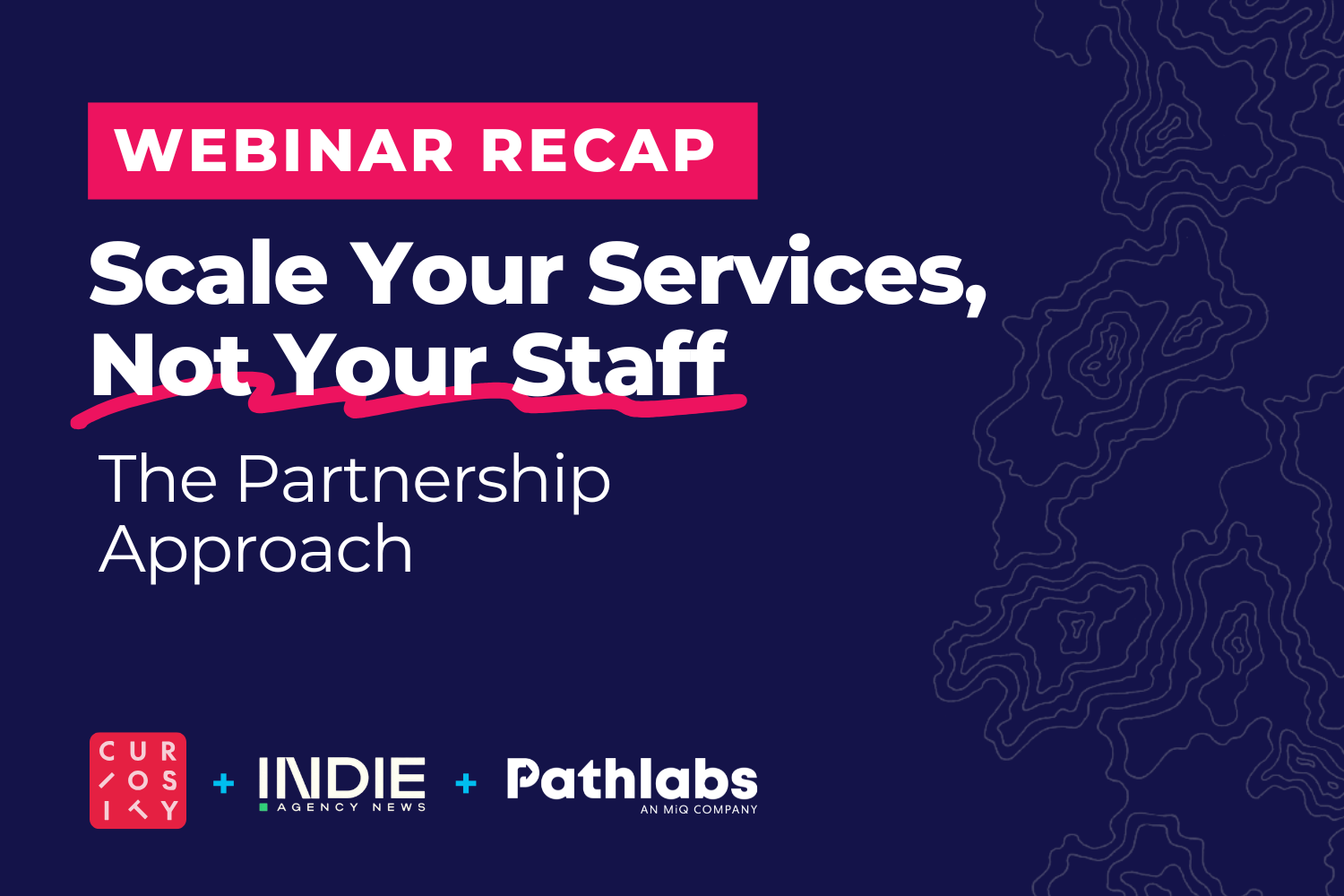Decoding Ad Placement: Placing an Advertisement Strategically
| Pathlabs Marketing |
| February 7th, 2024 |
Going about running a paid digital media campaign and placing ads might seem straightforward – it is not. In this blog, we pick apart what it means to place an ad, highlight the best practices for making ad placement decisions, and discuss some associated challenges.
What Is Ad Placement?
Ad placement simply refers to the strategic positioning of ads. When advertising and media teams talk about ad placement, they most often focus on:
Where the ads for their campaigns are ‘placed,’ like on a website, social media platform, streaming service, etc.
Where the ads appear within these locations, such as in the content feed, before a video, or on the home page.
The requisite steps the team must complete to get an ad for the campaign to actually serve in a given location.
Which users to place an ad in front of, when to serve them ads, and how often should each see a given ad within a defined period of time.
Why Worry About Ad Placement?
“Conscious ad placement for a campaign is important, as paid advertising is no joke. Teams are literally spending money to place ads in front of users with the ultimate goal that they engage with the brand or even convert.
If they indiscriminately place ads in different locations, they likely won’t reach their audience, rendering zero performance and wasting ad budget.”
This is all to say that prioritizing ad placement in relevant locations and in front of relevant users is the best way to go.
Moreover, campaigns executed with AdTech can run certain risks nowadays, like placing ads in online locations adjacent to inappropriate, competing, ironic, or sketchy content, hurting brand safety. This, too, makes hyper-aware ad placement vital to any campaign. More on that later.
How Do I Place an Ad?
There are multiple ways in which a team can run a paid media campaign and place ads in front of users.
Traditional Media Placements (Billboards, Newspapers, Radio)
With traditional media placements, teams directly negotiate with and pay publishers (ad space owners) to place their ad creative in ad inventory slots for a given amount of time.
This approach allows control over ad placement but offers much less targeted audience reach, performance insights, and attributable traffic.
Digital Advertising (Pathlabs’ Wheelhouse)
With digital media advertising, in-house teams, agencies, and media execution partners can have a hay day with placing ads across channels like display, native, OTT/CTV, DOOH, paid social, paid search, and more.
These teams primarily use ad-buying platforms like Google Ads, The Trade Desk, or DV360 to place ads. They build out their campaigns in-platform and set targeting parameters; upon launching, the platform taps into different ad exchanges and networks, placing ads in front of users who align with these parameters.
A standout feature with ad-buying platforms handling the ad placement is the same campaign can place ads in front of users across multiple online locations and devices. This contrasts with traditional ad placements, like billboards, where the ad serves in a single or select few locations and reaches a general audience.
Best Practices for Placing an Advertisement
Let’s discuss best practices and key considerations when running a digital media campaign and placing ads.
Consider Business Objectives and Timing
It is advisable to run paid digital media campaigns and place ads mainly when driving performance for core, timely business objectives. For example, if the team is pushing a sale, promoting signups for a course, or trying to book reservations during a prime season, placing ads is a good idea.
Concerning campaign flight timing, the team should begin placing ads in anticipation of the key business event to allow enough time to notify the audience and get them to engage.
“Successful digital campaigns can also be built on ‘evergreen’ content or offerings that run on a slower but consistent basis throughout parts or all of a year.”
Choose the Right Channel for Advertising Placement
Teams will want to place ads on channels where they know their audience resides. This proof may be from historical data or industry insights.
“Teams may have to do some testing to see which channel performs best. At the end of the day, sticking to a smaller number of channels to avoid stretching themselves too thin is best.
Lastly, don’t invest in placing ads on a certain channel or platform because of flashy promises or a prospective new technology. Go where the audience is.”
Place Ads Based on User and Contextual Targeting
Almost all ad platforms permit a level of targeting; teams should leverage these capabilities to ensure their ads serve in front of the most relevant users. Targeting parameters can include demographics, geography, interests, behaviors, and devices. The platform will then take care of the ad placement.
We also encourage contextual targeting, referring to targeting ad placements to locations that best align with the creative content and context of the user’s customer journey. For example, if the ad campaign aims to promote bikes, the platform will place ads in locations or contexts that either discuss bikes, sell bike equipment, or focus more on outdoor sports.
Since users engaging in these locations already have a pre-existing interest in the ad's subject matter, this increases their likelihood to lean in.
Leverage an Allow and Exclusion List
Ad buying platforms often have an allow or exclusion list. The allow list indicates digital locations where the team absolutely wants to serve their ads for their campaign. An exclusion list indicates the locations where ads must never serve.
Teams should leverage these two tools to ensure optimal ad placements.
Consider Frequency
Frequency refers to the number of times an advertisement for a campaign serves in front of the same user within a defined timeframe, such as an hour, day, or week.
A frequency cap is a vital parameter teams ought to include in their campaigns to ensure ads serve enough to make an impact but don’t propagate user annoyance.
For awareness campaigns, a frequency cap of one to two ads per hour, maybe even per week, can be effective. The team will likely bump frequency up for campaigns that aim for immediate lower-funnel action.
Understand Above-The-Fold vs Below-The-Fold
When advertising on websites, teams can opt for their ads to place above or below the page fold.
Expert opinions may differ, but prioritizing above-the-fold placements can be a good idea. Users who visit a website will likely engage primarily with the top part anyway. However, these ad placement options can come at a higher CPM price due to increased viewability.
Placing ads below the fold can still be effective, primarily for campaigns spending less budget or for placement locations with a historically high scroll-through rate, attributed to its quality content or overall short page length.
Understand In-Content vs Sidebar Placements
Teams can choose to place ads within the content of a webpage or in the margin (sidebar). In-content ads can integrate well into the page and be less intrusive. Some, however, break up the content and user experience.
For sidebar ads, they tend to stand alone and be prominent in the margin, which can be great. Users may, however, succumb to ad blindness and automatically ignore them.
Teams will need to make the final call on which placement option to choose, and most often, the answer comes from testing to see which works best.
Design Compelling Ad Creative
Regardless of where an ad places, its creative content is best when it embodies the elements below:
Includes a Call to Action
A CTA is a small tagline or box that indicates what the user seeing it should do next and can anticipate upon clicking the ad. Common CTAs are ‘Learn More,’ ‘Schedule Now,’ ‘Download eBook,’ ‘Browse Products,’ etc.
Has Quality Copy and Visuals
Non-blurry, eye-catching graphics make a big difference in grabbing user attention. Meanwhile, succinct copy immediately notifies the user what to know about the ad’s value proposition. Look to generative AI tools and creative services for help.
If Video, Keep It Ultra-Short
Video ads are best if ultra-short, efficiently getting the message or hook across to the user within three seconds.
Takes a Risk, Makes It Fun
Don’t be afraid to take a risk and infuse ad creative graphics, visuals, or copy with fun elements. We are in an attention-seeking economy: if an ad doesn’t stand out, users will look over it. This doesn’t mean teams need to shock fans, but they can change it up.
Overcoming Challenges in Advertising Placement
Set Realistic Advertising Budgets
Paid digital media can be expensive, and teams should remember that the more premium and high-trafficked the ad placement location, the higher the placement price. Once again, prioritizing the budget for key moments that drive essential business performance will help. Moreover, it is best to remember that just because the ad placement inventory isn’t premium doesn’t mean it isn’t valuable.
Account for the Impact of Ad Adjacency
When discussing ad adjacency, we refer to the content surrounding an ad when it places. For example, if an ad is placed on the New York Times’s website, all the language, images, photos, and ads surrounding it are adjacent content.
A challenge with ad adjacency, especially when using AdTech to place ads, is teams don’t always know the ins and outs of the thousands of locations where their ads could serve.
This becomes tricky if the ad appears in a location adjacent to inappropriate, political, shady, or competing content. In this case, the user seeing it may associate this adjacent content with the brand’s ad and overall image. This obviously can have a negative impact.
For those wanting to prevent negative ad adjacency, they can take the following measures:
Only Work With Quality AdTech and Partners
This is a given: work with legitimate platforms, publishers, and tech partners trusted by competitors and industry leaders.
Quality Assure Campaigns After Ad Placement Goes Live
Teams can typically access and pull up their ads' locations. They should check how these locations look after the ads are placed to ensure quality.
Use a Verification Vendor
These service providers work with ad-buying platforms to block a team’s ads from appearing in locations with undesirable content when served.
Use an Exclusion List
Once again, an exclusion or block list is helpful when dealing with ad-buying platforms, as teams can pinpoint explicit or undesirable ad locations where their ads must never appear.
Many agencies and media execution partners tend to develop a long-running universal blocklist that details placement locations that are off the table regardless of the campaign.
How Can a Media Execution Partner Help With Ad Placement?
A media execution partner helps agencies navigate the complex minutia around ad placement for their clients’ digital media campaigns.
Let’s break it down. The reality is agencies have to manage multiple digital media campaigns across channels for their clients. Each campaign and client has different needs, audiences, goals, etc. This impacts the overall ad placement strategy, piling up the complexity for the agency.
Enter media execution partners. MEPs work with agencies, stepping in directly to help manage their media execution and, in effect, ad placement.
The agency doesn’t have to invest in an in-house team or outsource vendor; they just collaborate with the MEP, which provides people, workflows, and technology to deliver performance while freeing up time for agency leaders to get back to working with clients and scaling their business.
Check out our case study page to learn more about how MEPs have helped agencies.













